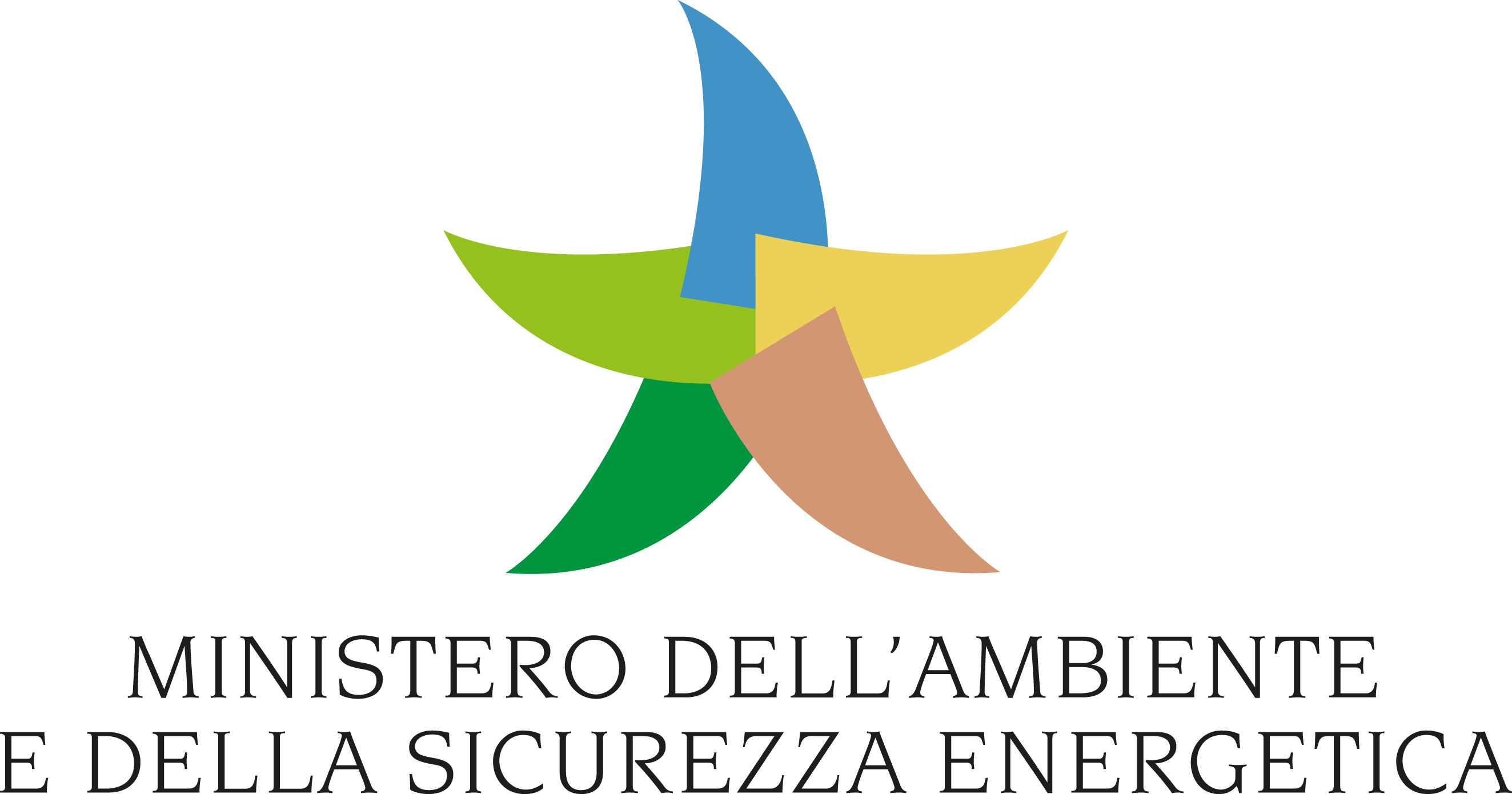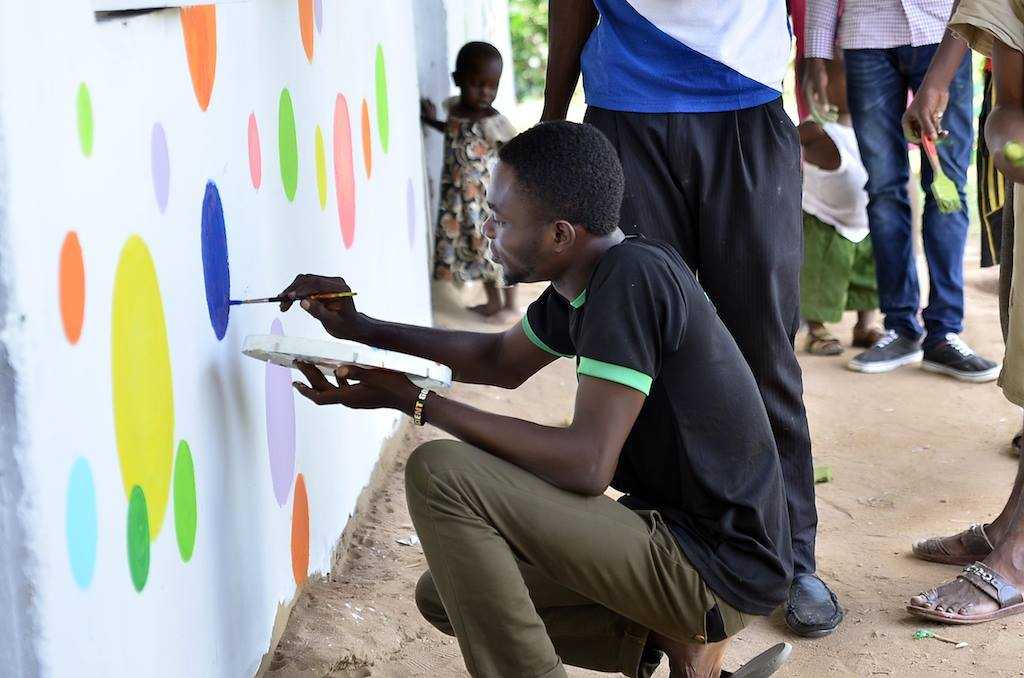
Climate change? Terrorism? The Global financial crisis? Nuclear warfare? Pandemics? All of these are global. We are confronted with problems that are not just confined to our boundaries, but are global in nature. With advances in technology, we are now being exposed to other cultures through new media resources without even buying a plane ticket. The world has truly become a global village. We are socially, economically and environmentally married to other countries. Locally, we crave for change; globally, we yearn for a revolution. Fuel prices are ridiculous, tomatoes may become extinct, our education system is marred with deficiencies, and our values are putrescent.
As much as we complain about plight, nothing changes until we strap on our boots and walk the walk. Our daunting problems should not stop us from taking action in minute ways. The solution is very simple: Think Global. Act Local.
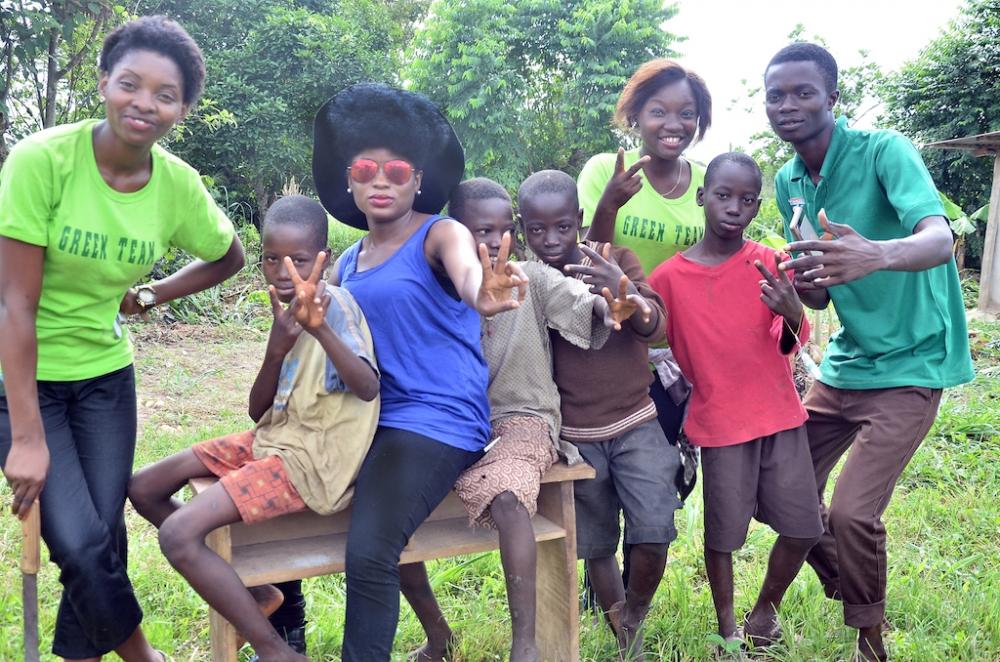
Photo Credit: Green Campus Initiative.
Our incalculable problems as a nation accelerate our need for piecemeal local initiatives to tackle societal problems. Endurance and patience, as forms of struggle, are greatly ignored. I am fortunate to stay in a rural community and what I have learned over the years is that the change we all want to see in Nigeria begins with us rolling up our sleeves and contributing our time and expertise to effect the desired change. When you ask an average Nigerian to volunteer or to engage positively in their local communities, they simply ask “what is in it for me?”
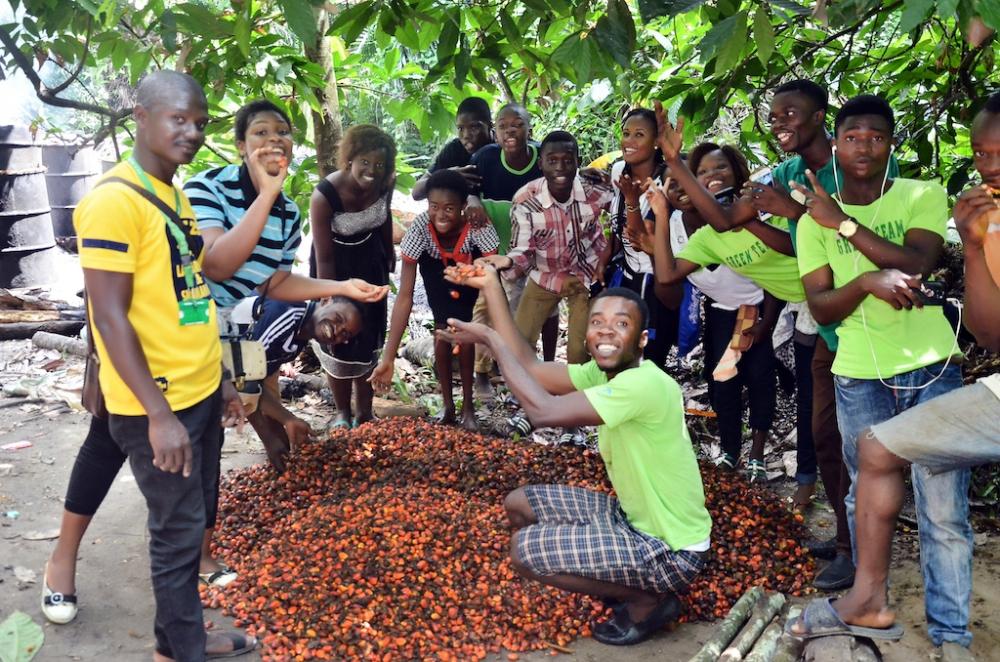
Photo Credit: Green Campus Initiative.
Yet we blame the government for all our woes, when sometimes all we have to do is just show up. The Greatest boxer of all time, Muhammad Ali once said: “The service you do for others is the rent you pay for your room here on Earth.”
Therefore, in practicing what we are preaching, the Green Campus Initiative went in search of a Primary School to renovate and commemorate the 2016 World Environmental Day (#WED2016), and when we contacted the Orimolade Community Primary School in Nigeria, we felt a deep connection. Thanks to social media, over 50 citizens volunteered their time to help the Green Campus Initiative bring this dream to life. I still have hope in our youth. Today, we choose life. We left our cell phones and tablets behind, and spent time in our community doing something positive while bringing people together in physical proximity through face-to-face interactions.
Volunteers played football and games with the locals barefoot after planting flowers, painting the classrooms, cutting the grass and drawing a beautiful mural on the walls. This was certainly the kind of experience that one remembers fondly and I am thrilled to have been part of #WED2016.
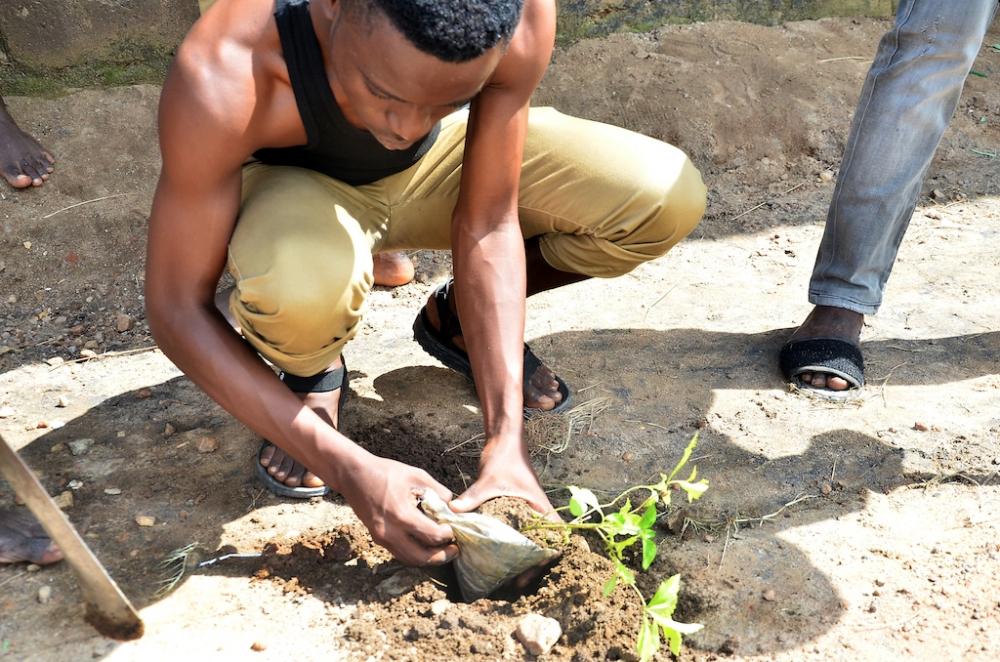
Photo Credit: Green Campus Initiative.
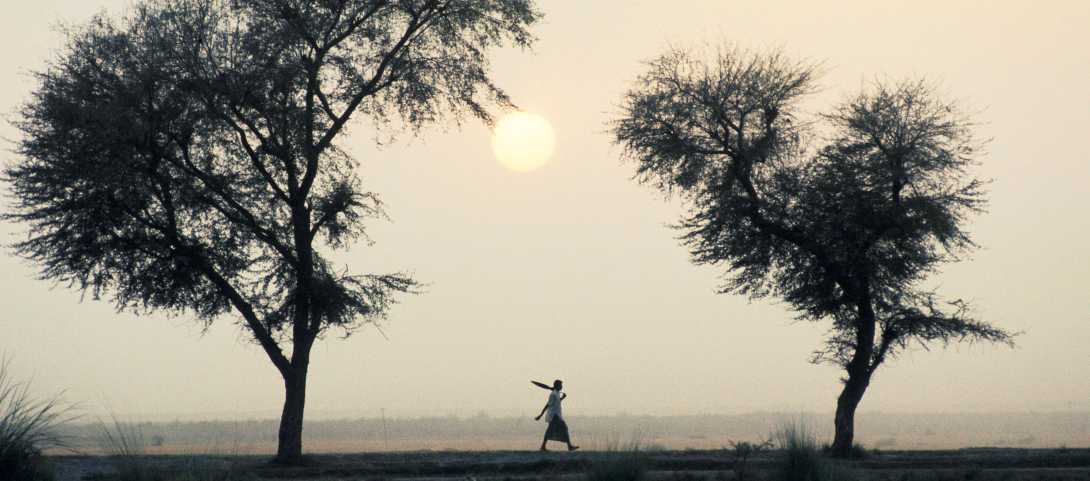
Depuis désormais deux ans, l'électrification de l'Afrique est devenue une cause internationale et les initiatives se multiplient afin de donner un accès à la lumière aux quelques 600 millions d'africains qui en sont privés. Les initiatives les plus médiatisées sont bien entendu le power Africa de Barack Obama, l'initiative Akon lighting Africa, le plan de la Banque Africaine de Développement ou encore l'initiative Energies pour l'Afrique de Jean Louis Borloo. Mais au niveau local, des jeunes se sont également lancés.
C'est le cas du béninois Adam Goundi que nous avons rencontré. Le jeune homme s'est fixé l'objectif d'électrifier les foyers modestes, en particulier dans les zones rurales, en utilisant une technologie unique. Un pari qui s'est avéré payant puisqu' Adam a déjà installé ses produits dans les villes de Djougou (510 km de Cotonou) et de Parakou (400 km de Cotonou) et qu'il a reçu le soutien des autorités béninoises. Il a même été sélectionné parmi les lauréats 2015 du concours des 1000 meilleurs entrepreneurs africains organisé par la fondation Tony Elumelu.
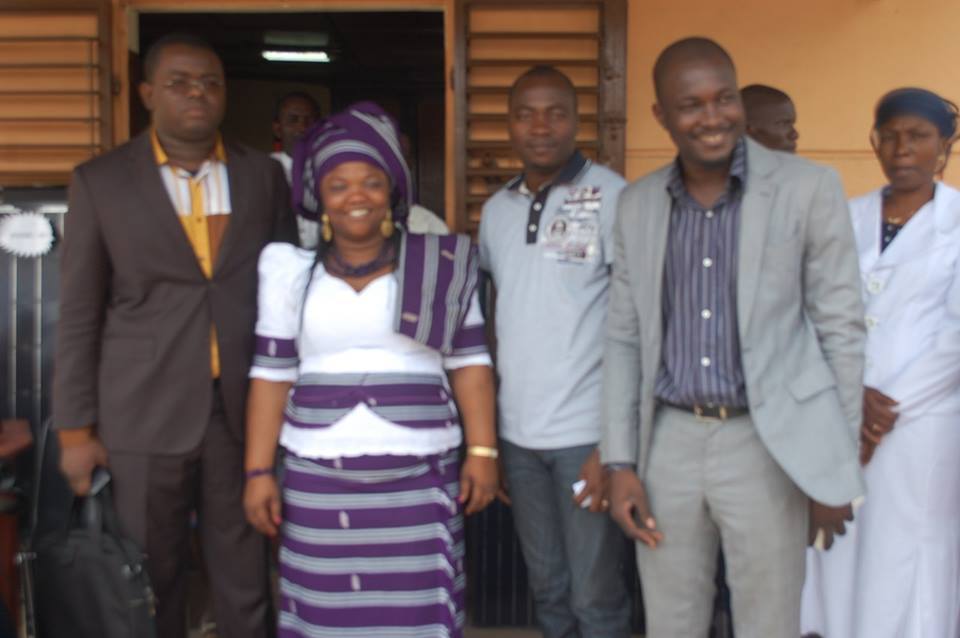
Photo Credit: Ecologique et Economique
Ecologique et Economique: Bonjour mr, pouvez vous vous présenter svp?
Adam Goundi: Bonjour, je m'appelle Adam Goundi et je suis le fondateur de la Benin Energy Sarl. Mon entreprise produit des panneaux solaires photovoltaïques tropicalisés et des mini kit solaires. Nous venons également de créer un module solaire intégré à internet haut débit qui permet d'accumuler beaucoup plus d'énergie que les panneaux solaires photovoltaïques.
Ecologique et Economique: Comment avez vous eu l'idée de lancer ce projet?
Adam Goundi: Mon idée est partie d'un constat assez simple. L'Afrique dispose de l'un des meilleurs taux d'ensoleillement du monde mais est paradoxalement l'un des continents qui importent le plus d'énergie: mon pays, le Bénin importe par exemple plus de 80% de ses ressources en énergie. Et le comble, c'est que les petits groupes électrogènes que nous importons sont bruyants et tombent en panne continuellement. C'est dans ce contexte que j'ai décidé de réfléchir à une solution à la fois sûre, économique et écologique pour accéder à l'énergie.
Ecologique et Economique: Concrètement, quelles sont les capacités de vos produits par rapport aux produits classiques (en termes de performance, de coût et d'accessibilité)?
Adam Goundi: Nous sommes spécialisés dans la vente de mini-kits solaires tropicalisés d'une puissance variant entre 3,5 et 5 ampères. Ils sont équipés de deux sorties: une sortie de 12V pour les luminaires et une de 220V pour les appareils contestables. En général, ces kits sont utilisés par les populations pour faire le commerce de charge des portables dans les zones enclavées.
Pour des installations qui demandent une puissance plus importante, nous faisons un dimensionnement et nous installons une mini-centrale photovoltaïque. Au niveau des prix, nos produits varient entre 250 000 et 500 000 FCFA ( y compris les convertisseurs et les contrôleurs de charge). Cela les rend légèrement plus chers que les produits classiques mais nous compensons avec une très belle performance sur la durée et un service après-vente sur 18 mois.
Ecologique et Economique: Comment les populations ont t'elles accueilli votre projet? Et quels sont les obstacles que vous rencontrez?
Adam Goundi: Il faut dire qu'au début, les populations ont été sceptiques sur la qualité de mes produits: ils sont en effet nombreux à avoir testé de mauvais produits ou à avoir fait confiance à de mauvais techniciens par le passé. Puis, ceux qui ont tenté ma solution ont très vite compris son efficacité par rapport aux produits classiques et le bouche à oreille a fonctionné.
Pour vous donner plus de précisions, je vous dirai que mes panneaux chargent uniquement à la lumière du jour et que le taux d'humidité intégré leur permet de rester chargés même pendant 5 jours de pluies diluviennes. Je vous dirai également que mes systèmes s'installent automatiquement et qu'ils sont utilisables dans tous les types de domiciles (appartement, villas....) et dans toutes les régions. Et bien entendu, le point le plus important c'est qu'en utilisant mes solutions, les populations n'ont plus besoin de l'énergie classique. Nous développons également une offre adaptée aux entreprises en fonction de leurs besoins.
Ecologique et Economique: Quels sont les soutiens dont vous bénéficiez dans votre aventure?
Adam Goundi: Nous avons reçu de nombreux encouragements de la part des citoyens et des autorités. Notre ministre de tutelle m'a même reçu à son cabinet et s'est ensuite déplacé dans mon unité de production en compagnie de tout son staff technique. Du côté financier, le projet vit pour le moment grâce à mes propres économies et au dévouement de mes collaborateurs. Mais comme vous vous en doutez, ce n'est pas facile tous les jours.
Ecologique et Economique: Nous savons que la production des panneaux photovoltaïques n'est pas toujours facile sur le continent. Quelle est la particularité de votre solution?
Adam Goundi: Notre technologie consiste à produire des modules photovoltaïques mono cristallin en sites isolés dans lesquels nous introduisons le taux d'ensoleillement et d'humidité nécessaire pour les adapter aux conditions climatiques de nos pays. Nous utilisons une technologie taïwanaise que nous adaptons dans notre usine située à la frontière entre le Bénin et le Burkina Faso.
Nous veillons également à ce que les batteries soient adaptées au climat et pour cela nous utilisons des batteries au gel que nous importons depuis la France, l'Espagne et l'Allemagne.
Ecologique et Economique: Quel est l'impact de votre projet en termes économiques, sociaux et environnementaux?
Adam Goundi: Sur le plan social, mon projet a plusieurs retombées. D'une part, il permettra l'accès à l'énergie pour les zones enclavées et donc un accès à l'éducation pour les enfants de ces zones. Il faut dire qu'actuellement de nombreux enfants ont des difficultés à préparer leurs cours à cause du manque de lumière et que les enseignants voient comme une punition les affectations en zones enclavées en raison également du manque d'électricité. D'autre part, il permettra la création d'emplois permanents : j'emploie déjà 10 techniciens et je compte en recruter davantage quand mon activité se développera.
Sur le plan écologique, mon projet réduira les émissions de CO2 puisque la production d'une centrale électrosolaire de 40 KHW évite la production de 40 tonnes de CO2 par an. Et sur le plan économique, il permettra aux béninois de réduire leurs factures énergétiques tout en évitant les nombreux délestages dont ils sont actuellement victimes.
Ecologique et Economique: Quels sont vos besoins actuellement?
Adam Goundi: J'ai de nombreux projets pour l'énergie solaire dans mon pays et c'est pourquoi j'aimerais trouver des investisseurs.
Ecologique et Economique: Nous vous remercions pour cet entretien.
Adam Goundi: C'est à moi de vous remercier
Touré Kany Abiba Nelly Carla est docteure en sciences économiques. Elle s'intéresse depuis cinq ans maintenant à la question du développement durable en Afrique et elle a déjà écrit plusieurs articles scientifiques sur le sujet. Elle est fondée depuis un an le blog EcologiqueetEconomique avec pour objectifs de sensibiliser les populations africaines au développement durable et de démontrer la pertinence de l'économie circulaire sur le continent.
Voir Plus ici.
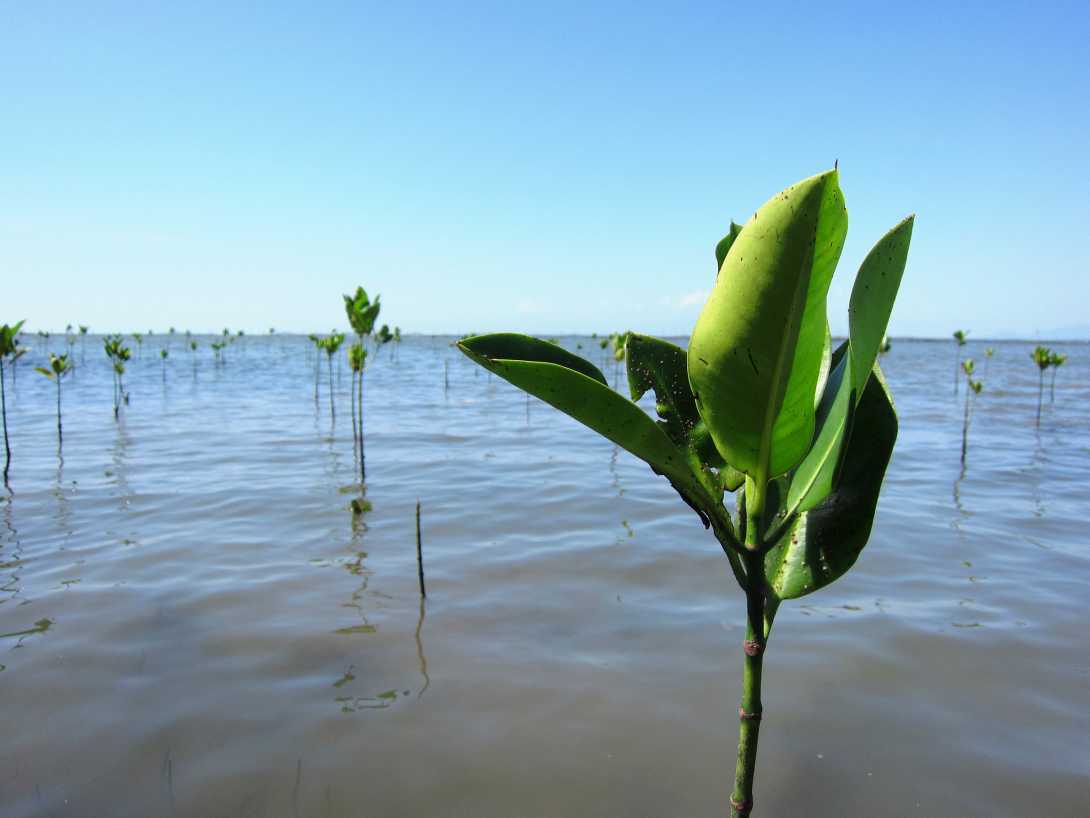
World Day to Combat Desertification 2016.This year, the world comes together to celebrate this day under the theme of “Protect Earth. Restore land. Engage people”.
Desertification, land degradation, drought and climate change are interconnected. As a result of land degradation and climate change, the severity and frequency of droughts have been increasing, along with floods and extreme temperatures. More than 50 per cent of agricultural land is moderately or severely degraded, with 12 million hectares lost to production each year.
Every June 17th, the global community celebrates World Day to Combat desertification (WDCD). In his annual message to mark the day, United Nations Secretary General Ban Ki-Moon urged all actors to work together. “Without a long-term solution, desertification and land degradation will not only affect food supply but lead to increased migration and threaten the stability of many nations and regions. This is why world leaders made land degradation neutrality one of the targets of the Sustainable Development Goals. That means rehabilitating at least 12 million hectares of degraded land a year,” he said. Last year, 193 countries pledged to strive to become land degradation neutral by 2030. This means that if one hectare of land is degraded, we should try to restore back to health an equal amount of degraded land.
“Ninety countries have already signed up to the challenge and are setting their national targets. This is admirable. But it is not enough when at least 169 countries are affected by land degradation or drought, and all countries are indirectly impacted by them,” said UN Convention to Combat Desertification (UNCCD) Executive Secretary Monique Barbut.“Actions to avoid, halt and reverse land degradation must begin now with everyone fully engaged. The prospect of a land degradation neutral world grows dimmer if we procrastinate. But it shines brighter each time a person or country joins the campaign to restore degraded land or the battle against the degradation of new land.”
Addressing the UNCCD COP12 in Ankara, Turkey, last year, the GEF CEO Naoko Ishii announced a contribution of USD 3 million for countries to support their target setting under the Land Degradation Neutrality (LDN) concept. Using set-aside resources of the 6th replenishment allocations for the Land Degradation Focal Area (LDFA), this enabling activity should enhance capacity of recipient countries to speed up target setting in line with the Sustainable Development Goals.
Read the original post at the GEF website.
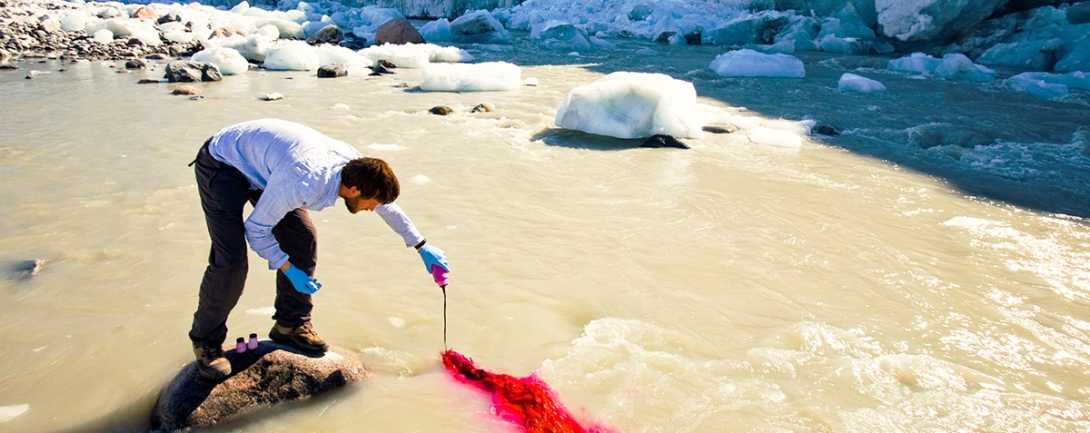
For as long as I can remember I have been interested in the natural world and environment, as a child I was an avid bird watcher, a hobby I still pursue to this day. Later on in life my other hobby of photography developed into a full time profession.
<p style="font-size: 13.008px; line-height: 20.0063px; text-align: center;"><img alt="" src="/sites/default/files/images/468_IMG_1206.jpg" style="width: 1000px; height: 667px;" /></p>
<p>The next step is to print 500 of the best photographs in an art photographic book entitled “Images from a Warming Planet”. Jonathon Porritt has kindly written the foreword for the book, which I plan to self-publish. To this end I have launched a crowd funding campaign on Kickstarter to raise the vital funds to enable me to print the book. I truly believe that this book will have a real impact on alerting the world to what is already happening out there as a result of climate change, and importantly, what we can all do to avert its worst impacts.</p>
<p>If you could <a href="http://www.kickstarter.com/projects/warmingplanet/images-from-a-warming…; target="_blank">support this campaign</a> by donating I would be truly grateful, no sum is too small. </p>
<p>The campaign runs for just 30 days. People’s pledged money will only be taken If the target of £50,000 is reached. I launched the campaign on 1st June, it runs to the 30th June. Already I have been overwhelmed by peoples kindness. Following a TV appearance in the UK about the project, I was contacted by a lady who said she wanted to give me a donation. I gave her my address and a week later a card arrived in the post with a cheque for £20,000</p>
<p>Thanks for considering supporting this. My hope is that this project may prevent more people suffering the future horrendous consequences of climate change.</p>
<p style="font-size: 13.008px; line-height: 20.0063px;"> </p>
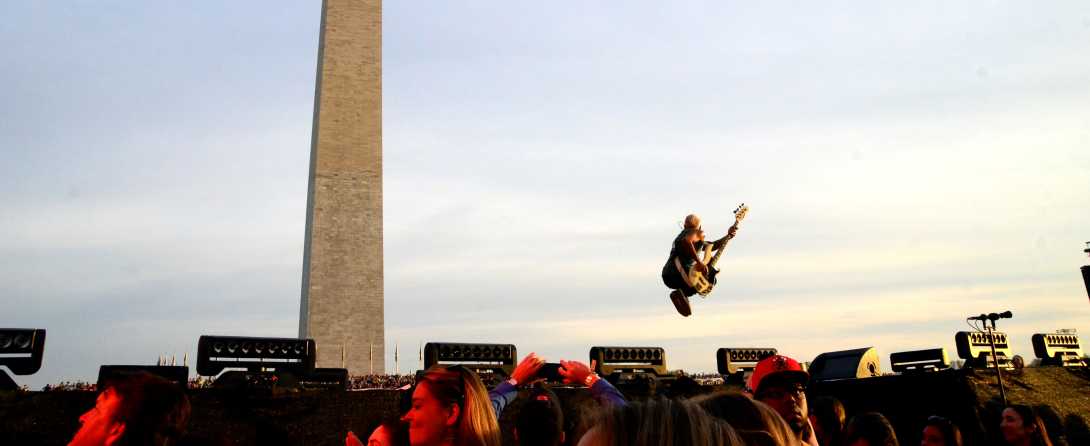
Climate Change has been inspiring many artists to raise awareness through melodic songs and powerful lyrics. Music is global and so is Climate Change.
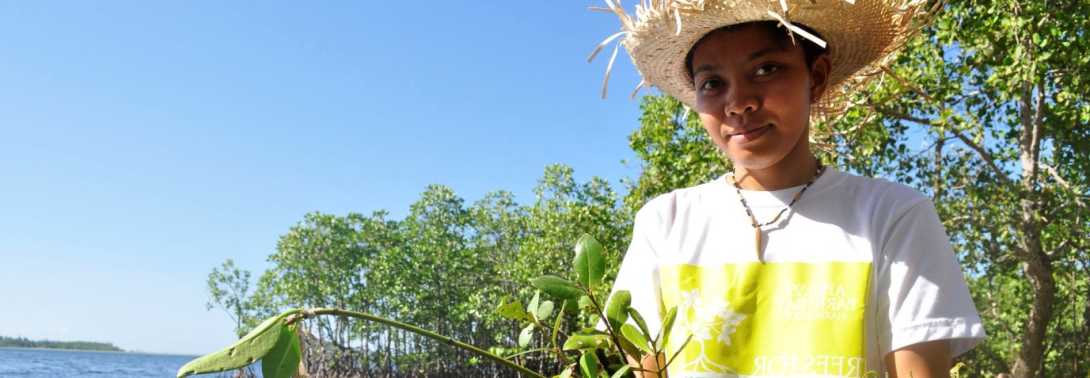
On April 22, the world celebrated the Earth Day with a common goal - to plant more trees. Driven by this idea, its relevance and a very opportune time to take action on climate change, we joined the Earth Day celebration by initiating a “Plant a Tree for the Earth” initiative as our initial advocacy action to save Mother Earth.
We - a group of visual artists alongside with the youth and community from Marinduque (an island in the Philippines) – worked together to celebrate this moment with the world, by planting mangrove trees at the Botilao Mangrove Forestry situated in the Botilao Island in Marinduque - the well-known "Heart of the Philippines", due to its heart-shaped form.
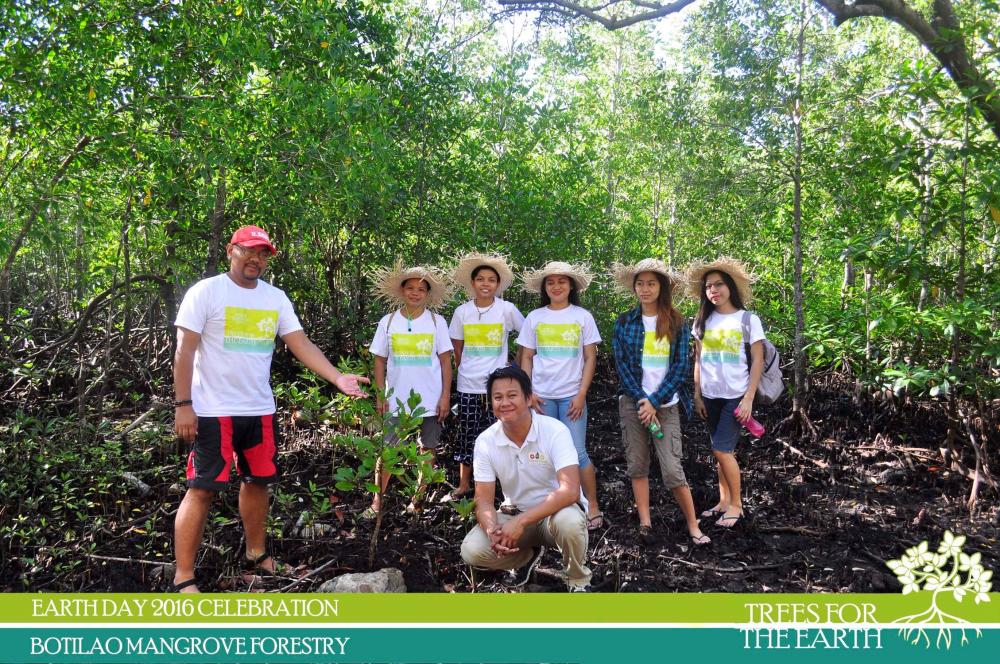
Photo Credit: Trees for The Earth
Our commitment to plant trees, together with some friends, fellow artists, and fellow environmentalists, went beyond expected, and our movement to plant mangrove trees become an inspiration to people of Marinduque Island to partake in saving, not only their Mangrove Forestry, but also the environment of the island. To join us on this quest, we had the help of volunteers from Sining Karaban, a Free-Art Learning Education that promotes leveraging creativity to help and inspire the young people and the participation of the Dream Favor Travel & Tours, a private company who also promulgates a good environment in the island through Eco-Tourism initiatives.
The day started early, and together hand-in-hand, we hit the road leading to the Mangrove Forestry. As we initiated a remarkable and unforgettable celebration of Earth Day in the Island of Marinduque, we felt a strong and positive support from the community, willing to help mitigate the effects of Climate Change by creating a new green “blanket” of trees to “cover” our Mother Earth.
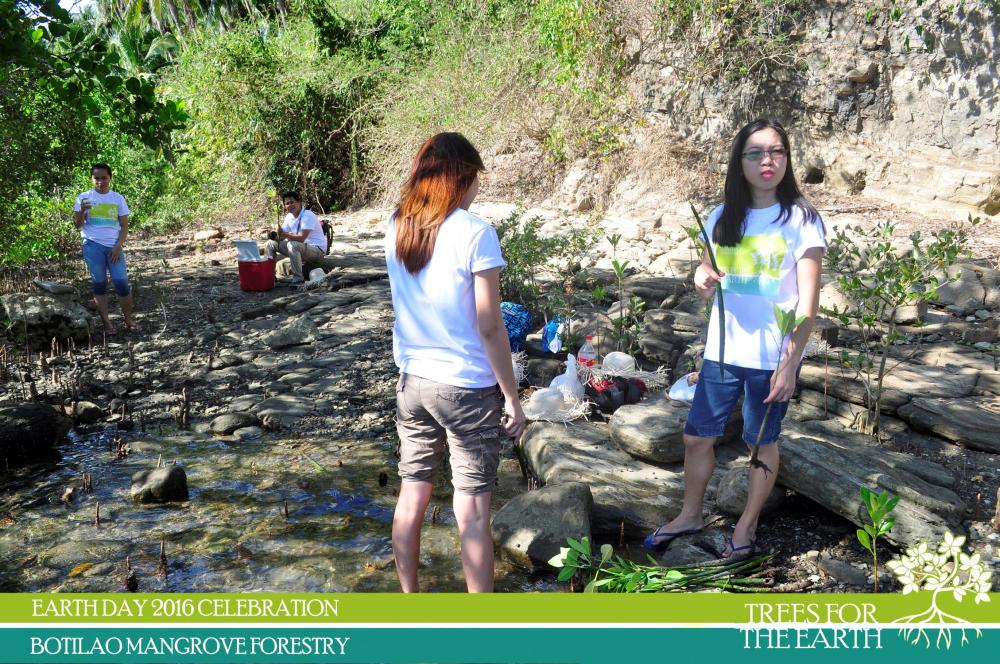
Photo Credit: Trees for The Earth
Find out more here.
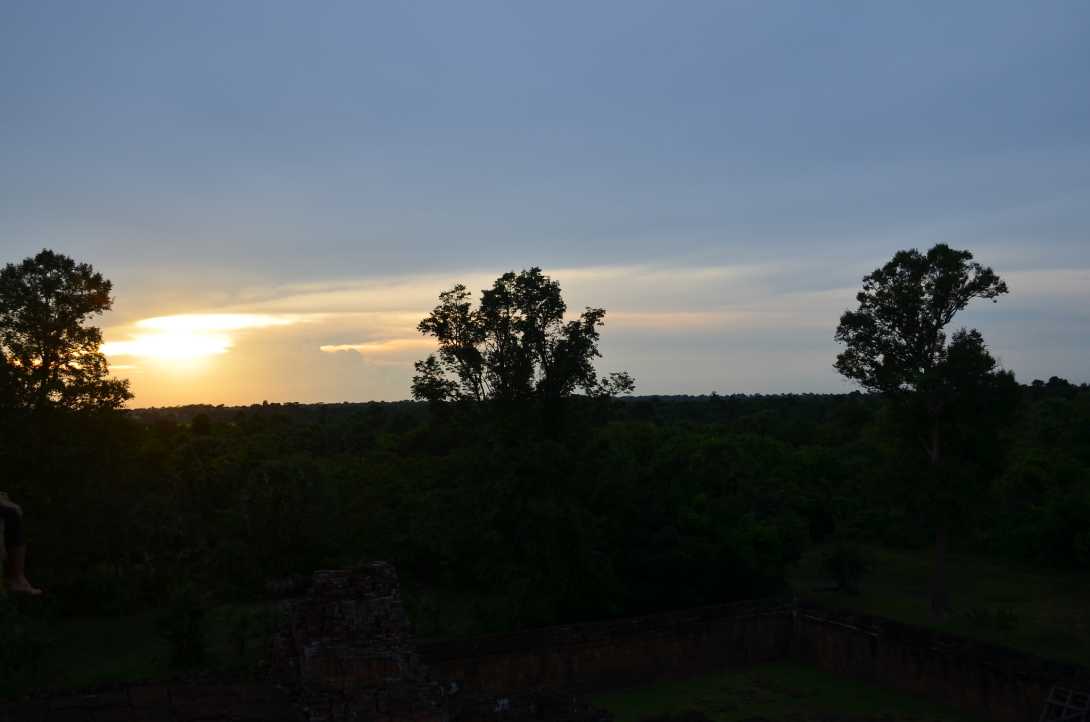
If you think your electricity bill is too high, you’re probably right - but it’s not just because energy is expensive. The average monthly bill for electricity is over $110, and almost $40 of that is from energy that your home is wasting. This is a problem - but for a homeowner who’s serious about sustainable living, it’s not insurmountable.
The Cost of Convenience
There’s no denying that the modern world is convenient. We can travel farther, communicate faster, and achieve more than at any other point in history. All of this is possible through our society’s mastery of electricity.
It’s electricity that powers the factories where cars are made. It’s electricity that powers the internet, lets us pay with credit and debit cards, and literally lights up our lives. According to the Energy Information Administration, the last few decades have seen explosive growth in the amount of energy consumed across the country. The truth of the matter is that there aren’t many new things that don’t involve a lot of energy being spent at some point in the process, and we’re quite literally paying the price for it.
Now, in a perfect world, we’d never waste the slightest bit of energy we produced. Unfortunately, reality is a little less than ideal, giving rise to the following considerations.
- First, perfect use of energy is an unobtainable goal. We literally do not have the capability to use 100% of our energy without any kind of waste. When we say that a product is “energy efficient”, what we really mean is “it’s one of the least-wasteful choices we have”.
- Second, the only practical way to have zero waste is to use zero energy. In other words, to truly eliminate waste, we’d have to give up almost everything our society has created. It doesn’t take an expert to realize this has exactly no chance of happening.
This doesn’t mean all is lost, though. While we can’t expect to be perfect, we canmake a serious commitment to reducing energy waste when and where it’s practical to do so. There are many ways to save energy in your home, and when every household takes a few small steps to reduce waste, the total result is incredible. For now, though, let’s take a look at the infographic below and see which parts of your home are using the most energy.
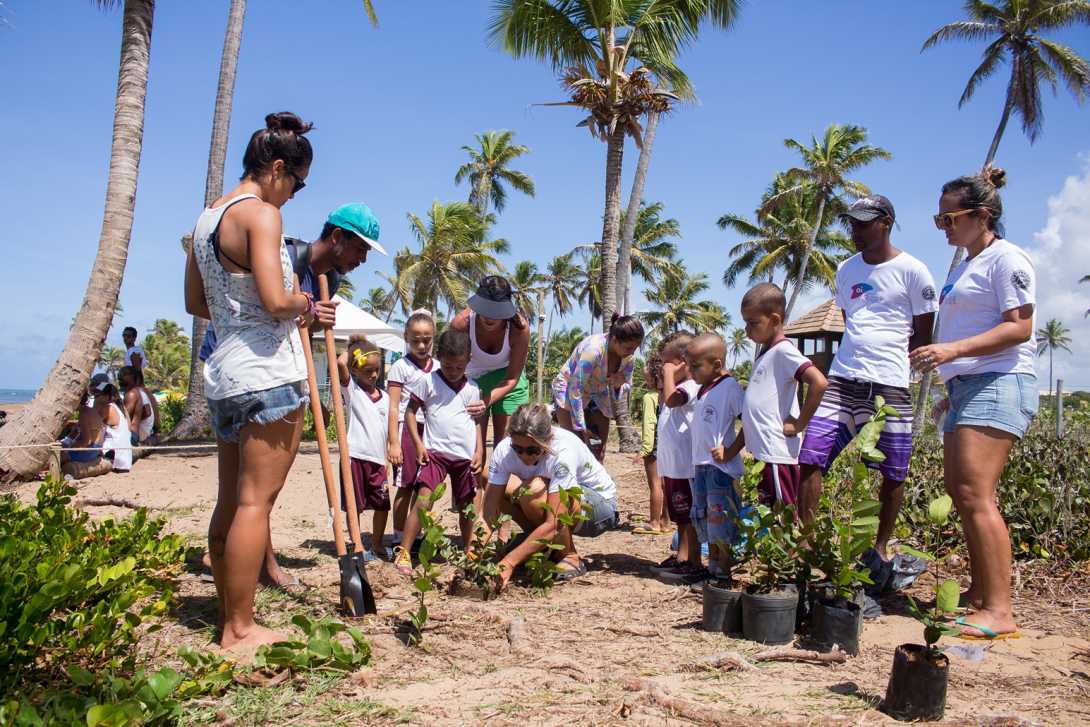
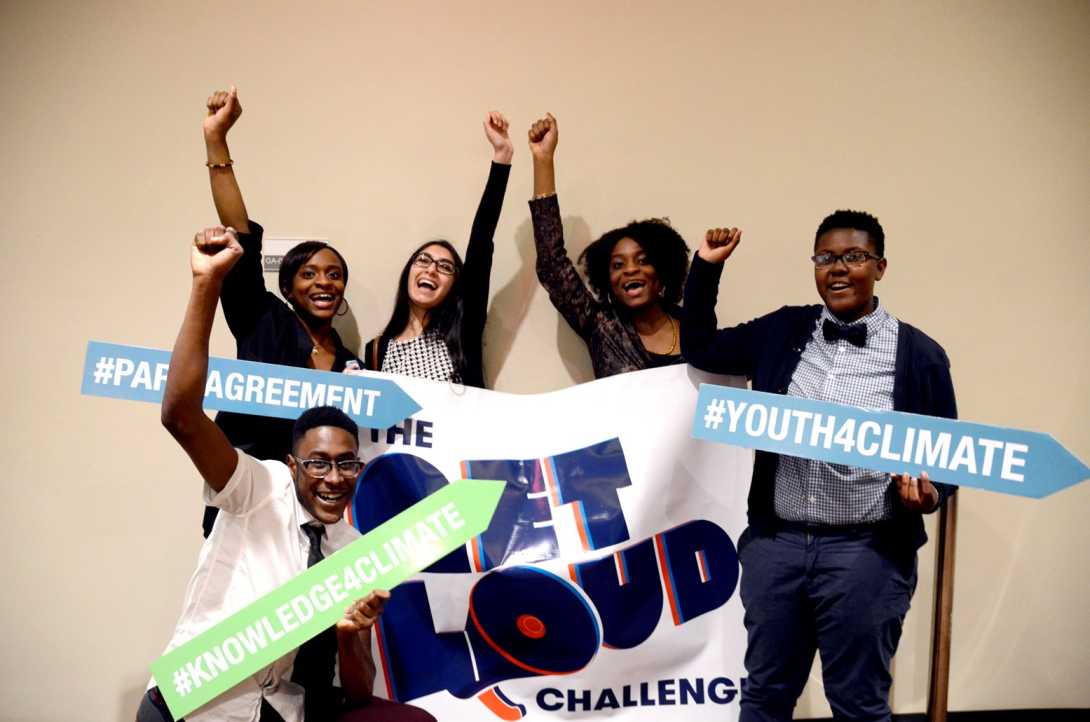
ACE Fellows from New York City joined Alliance for Climate Education (ACE) staff at United Nations headquarters this week for the High-level Thematic Debate on Achieving the Sustainable Development Goals, and the historic signing of the Paris Climate Agreement. Fellows played a vital role in interviewing celebrities like Forest Whitaker, and notable attendees like the United Nations President of the General Assembly, Mogens Lykketoft.
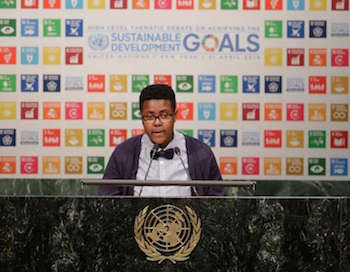
ACE partnered with Connect4Climate for this week’s events, a global partnership program of the World Bank aiming to communicate about climate change to the most diverse audiences possible through innovative means. ACE worked with Max Thabiso Edkins, Climate Change Expert at Connect4Climate, World Bank, to position Fellows in the United Nations Digital Media Zone as key youth reporters. Fellows live-tweeted, captured photo and video, co-ran a selfie station, and blogged about the events taking place on Thursday and Friday.
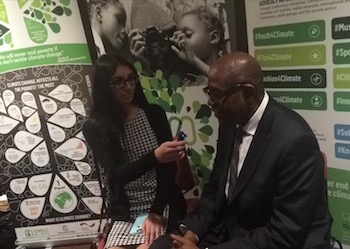
Most notably, ACE Fellow, Victoria Barrett, addressed the attendees in the UN General Assembly Hall on Thursday during the opening ceremony of the High-level Thematic Debate on Achieving the Sustainable Development Goals, as the only young person in the line-up. Victoria’s powerful speech gripped the room when she said, “we are all the 18 million people of Bangladesh projected to be climate refugees by mid-Century. We are all the nations of the Global South being disproportionately affected by climate disruption. And we, together, must unite to save ourselves.”
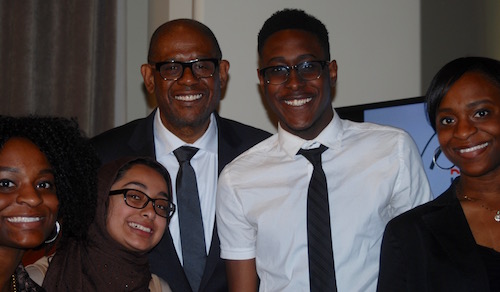
In an interview conducted by ACE Fellow, Dinaz Kureishy, with actor, Forest Whitaker, shortly after Victoria’s speech, he said “they [the youth] must manifest in their lives and environment, invest themselves in the future. You are a leader by coming here today. Help give them opportunity, and lead them.” He called on world leaders to be “the architects shaping the world's future." As a young person, I learned today that there is an entire population that cares about what is happening to the earth around us.
The real question I’m left with is: will caring be enough to create change?
In a riveting speech given by actor, Leonardo DiCaprio this morning, he said, “You know climate change is happening faster than even the most pessimistic scientists warned us before. Think about the shame that each one of us will carry when our children and grandchildren look back and realize we had the means to stop the devastation, but lacked the political will to do so.” He continued, “Our planet cannot be saved unless we leave fossil fuels in the ground where they belong. Now is the time for bold, unprecedented action.” I couldn’t agree more with Mr. DiCaprio. That’s why I’m spending this Earth Day reporting from the UN Digital Media Zone on behalf of young people across the planet.
Read the original article here.


